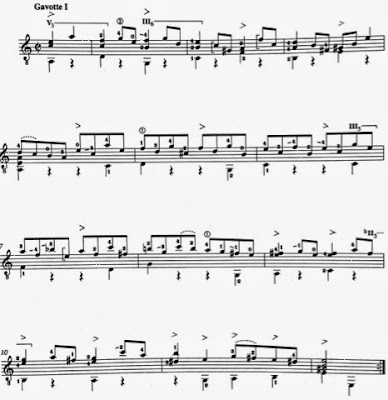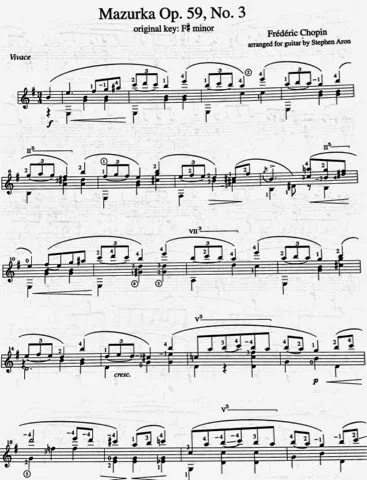One of the consistent compositional devices used by Bach in his motoric works (pieces with constant, uninterrupted 16th notes, for instance) is the changing of the rhythmic character of the music through varying the note patterns. He uses this device to convey an increase in tension by implying a quickening of pulse as cadences approach, in addition to introducing secondary (hidden) melodic material. The shifting of note emphasis is also used in non-motoric works to carry the material forward to the cadence.
These effects are compelling and highly satisfying when performed with clarity.
Doing so requires that a) you recognize these elements in the score and b) you have the balance chops to deliver the ideas unambiguously to the audience.
This post will identify a few of these instances and highlight score excerpts for discussion. Try the passages as indicated and, if the result is different from what you're accustomed to playing or hearing, consider the suggested interpretations as potential alternatives.
Take the following passage from Lute Suite BWV 997, Double:
In mm 17-19, note the powerful 2 beats-per-bar feeling. Take the bass notes as your cue and play lightly and without emphasis on the notes in between these large beats. Then, in m20, play with no emphasis on beat 2, but a strong 8th-note pickup to m21 instead (again, the bass is the cue). The next three measures are played with strong emphasis on every beat where the bass plays. This increase in the number of emphases per bar creates considerable excitement as the cadence draws near. Then, as the phrase resolves in m24, play with one strong beat only (the downbeat), letting the long rising arpeggio float over beat two.
This awareness of structure and form, combined with an unambiguous articulation yeilds a mature reading of the music and is, as luck would have it, easier to play. It is easier because all the notes you've now relegated to quiet passing tones can be played lightly, allowing the right arm to relax in a way that is impossible if every note is played loudly.
I should add here that when I use the word "emphasize," this does not necessarily mean "accent." Sometimes an emphasis is created by playing even softer; context and taste determine this.
In this example, from the Prelude, BWV 998, my interest now turns to the hidden melodic parts in what appears to be running single line.
Starting in m30, the music becomes three parts instead of two. Note the descending line in the middle, as highlighted. To me, this is the primary melodic gesture of the sequence. The repeated notes above the line are simply harmonic and rhythmic placeholders, but at end of each measure, this secondary part asserts itself with a delightful three-note response. It's easy to imagine it orchestrated for a string trio, in which the viola gets the solo, with the violin holding long notes until that three-note answer at the end of each bar. The key in execution is to play the two accompanying notes mid-bar (f#'s in m30) extremely quietly. Two notes in each measure need to be soft. And it makes all the difference. (I like to hear the three-note response played with different character than the primary tune, to help convey three parts, but this can be done with great subtlety.)
Here again, the combination of awareness of the text and the ability to properly balance the notes create a more interesting reading.
In the following example, I'd like to address shifting emphasis pattern again, in a slightly different context. This excerpt is from the 1st Gavotte from Lute Suite BWV 995.
One of the signal idiosyncrasies of the Gavotte is that it both starts on beat 2, and tends to emphasize that beat, alternating with a gentle downbeat. As this Gavotte begins, that is exactly the pattern we get. The player needs to take care to de-emphasize the downbeats to produce the correct effect. But note how cleverly Bach shifts this pattern in m8.
By m9 we have now shifted to downbeat phrasing in anticipation of the cadence. This shift helps build energy towards the section's conclusion, but is easily missed. The technique of controlling which notes are louder and which notes are softer has everything to do with interpretation, style, and, quite simply, a more convincing reading of the score.
Finally, I'll turn my attention to the Gigue from Lute Suite BWV 996:
In this passage, Bach introduces a melodic figure, first in dialogue then in parallel harmony, in a passage easily read as four-parts. By carefully playing the in-between notes quietly, this texture can be rendered clearly, and the passage made easier to play.
The common feature throughout this discussion is the double challenge of identifying from context and style what passages require a multiple-level approach or sensitivity to shifting emphasis patterns, combined with the challenge of controlling right hand articulation to avoid overplaying the accompanying, or filler, notes and thus reveal for the listener these delightful subtleties. If, as the music unfolds, the listener is carried from texture to texture, each one musically distinct, then it is because the player's skills in controlling balance are up to the task. The works of Bach, like nearly all other guitar music, relies heavily, for clarity of voicing and composer intent, on balance.
Next post on balance: foreground and background in simultaneous notes.









